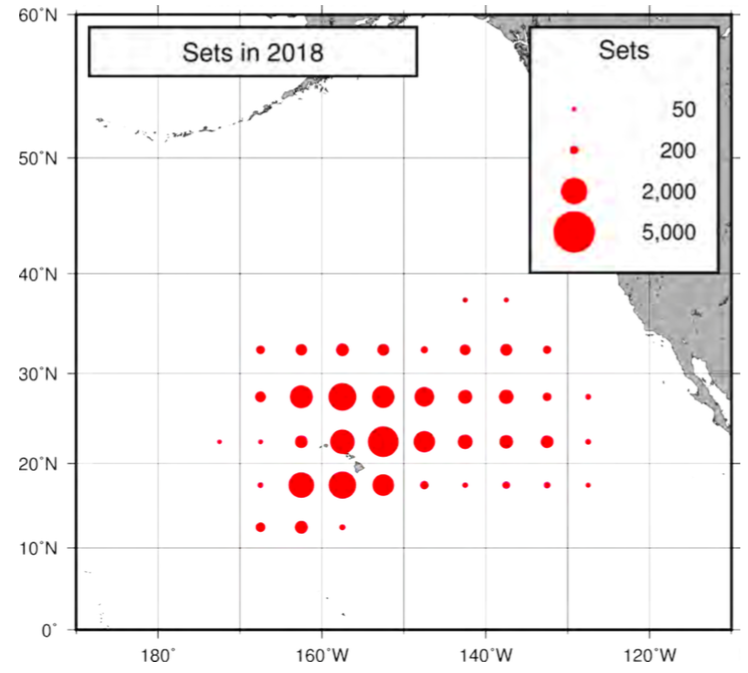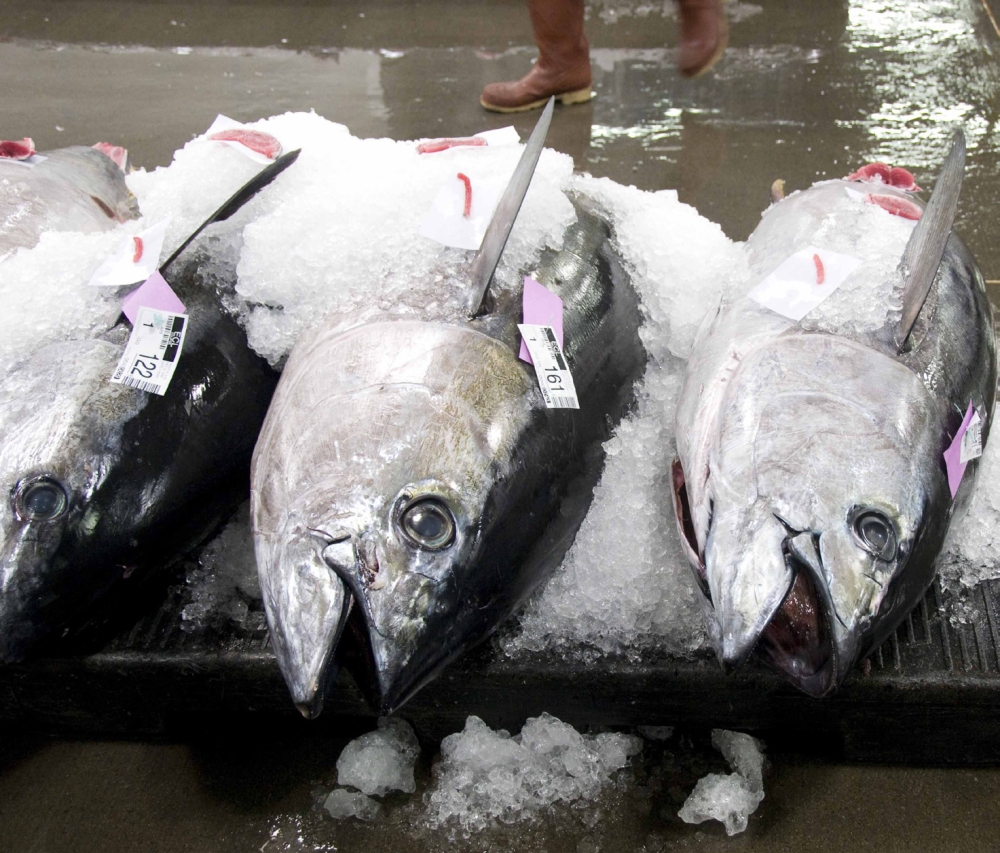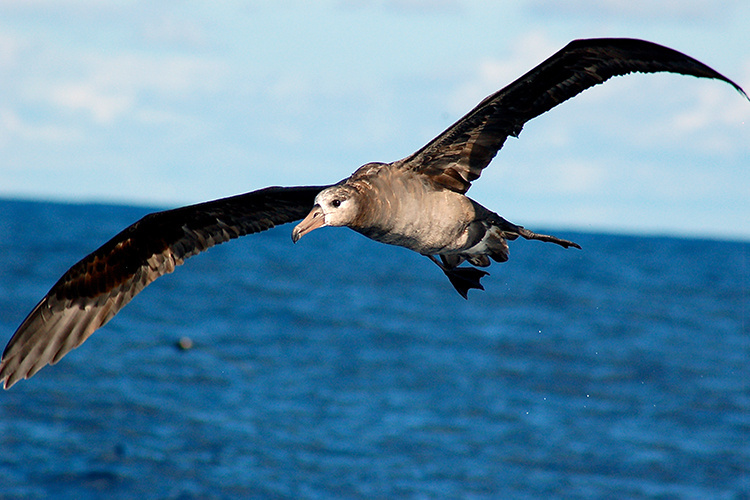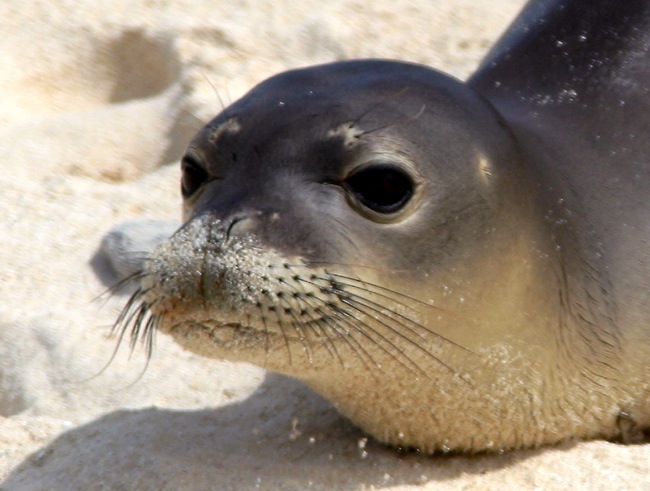Council Seeks to Preempt Closure Of Fishing Areas on the High Seas

The United Nations last year started negotiations on a treaty that could establish large-scale protected areas on the high seas, raising concern among staff of the Western Pacific Fishery Management Council that the Hawai‘i-based longline fleets may lose even more fishing ground than they already have.
With the expansion of the marine national monuments in the Northwestern Hawaiian Islands and Pacific Islands Remote Areas, the deep- and shallow-set fleets — which target bigeye and swordfish, respectively — have increasingly focused their efforts on the high seas. According to council staff, more than 70 percent of the deep-set fishery occurs in international waters. For the shallow-set fishery, it’s 90 percent.
More UN negotiation meetings have been scheduled throughout this year and the process is expected to conclude in mid-2020.
Last month, Ray Hilborn, a fisheries scientist and University of Washington professor who sits on the council’s Scientific and Statistical Committee, made a presentation to his fellow committee members on why he believes large-scale marine protected areas are ineffective.
Among other things, Hilborn has argued in published papers that MPAs don’t protect against much of anything except fishing and don’t even do a good job of that, since fishing effort doesn’t go away.
It simply moves elsewhere.
In an August 2018 article in the journal BioScience, more than a dozen scientists from across the world (including the University of Hawai‘i’s Alan Friedlander) addressed the many criticisms of large-scale marine protected areas leveled by Hilborn and others.
They conceded that fisheries management can help rebuild overexploited stocks while not addressing the status of non-target species or those that aren’t commercially viable, “and it often fails to account for the collateral impacts of fishing.”
“Measures such as bycatch mitigation, gear restrictions, and seasonal closures may reduce some of the broader ecosystem impacts of fisheries. However, MPAs embody long-term ecosystem-based management, protecting vulnerable and under- and un- valued species and helping secure ecosystem integrity through maintenance of trophic linkages, things that usually go beyond the mandate or competence of fishery managers,” they wrote, adding that MPAs also address threats from activities, “such as maritime traffic or oil and mineral exploration and exploitation.”
That being said, Chris Smyth and Quentin Hanich of the University of Wollongong’s Australian National Centre for Ocean Resources and Security (ANCORS) released a discussion paper earlier this year detailing the kinds of research needed to fill data gaps regarding large-scale MPAS. The list is long, and includes studies on spillover effects, migratory species, climate change, and socio-economics, among other things.
Both the BioScience and discussion paper were funded in whole or part by the Pew Charitable Trusts, which also supports the UN’s Intergovernmental Conference in Biodiversity Beyond National Jurisdiction.
At its meeting last month, the council voted to direct its staff to write to the Department of State to convey its concerns over the text of the UN convention, “including a request that high seas fisheries targeting tuna and tuna-like species be exempt from any potential high seas closures established under the … convention.
Council staffer Eric Kingma told the council’s scientific committee that if the UN convention does establish high-seas protected areas, it could become a “great concern” since so much of the the Hawai‘i longline fisheries’ effort occurs there.
“That’s why we’re so worked up,” he said.
Bigeye Allocations

“This is a messy year. We don’t want to complicate things,” council executive director Kitty Simonds said of its recommendations to the National Marine Fisheries Service on how bigeye tuna quotas should be transferred from Pacific island territories to Hawai‘i-based longliners.
Every year, the council submits recommendations to the service on how much of the territories’ bigeye tuna quota should be assigned to American Samoa, Guam, and the Commonwealth of the Northern Mariana Islands, and how much of that quota can then in turn be transferred to the Hawai‘i longline fleet. The quota specifications implement measures adopted by the international Western and Central Pacific Fisheries Commission.
In years past, the council suggested NMFS allocate more than what’s been traditionally granted, up to 1,000 metric tons (mt) per territory. Calculations by council staff indicate that doubling that amount — for a total of up to 6,000 additional mt — wouldn’t result in overfishing.
The likelihood that an increased effort by the Hawai‘i fleet would somehow endanger the stock is even slimmer, Kingma argued recently, since the longline fleets for countries such as Indonesia and Japan are underutilizing their quotas. Japan, in fact, has transferred some of its quota to China, he said at last month’s meeting of the council’s Scientific and Statistical Committee.
Kingma said it was “happy times” for bigeye in the region, in light of the commission’s recent stock assessments indicating that the fish are neither overfished or subject to overfishing. Even so, the United States’ quota has been stuck at 3,554 mt in recent years, although it’s been able to catch much more under the territorial allocations. Last year, the Hawai‘i longline fleet caught about 5,100 metric tons. One-thousand mt came as quota transferred from the Commonwealth of the Northern Mariana Islands, and about 100 mt came from American Samoa’s.
At last month’s council meeting, member Mike Goto, who manages the Honolulu fish auction, stressed that it was important for NMFS to complete its rules governing the allocations in a timely manner. In years past, when the fishery was catching bigeye at an unusually high rate, the fleet had to halt temporarily while the allocation rules were finalized.
Mike Tosatto, administrator for NMFS’s Pacific Islands Regional Office, pointed out that the bigeye catch rate has returned to its long-term average and said the rules this year should be done quickly if they simply maintain the status quo.
With that in mind, council staff said they will delay until next year a recommendation that NMFS prepare multi-year allocation rules. It also recommended that NMFS maintain the status quo in terms of the territorial allocations.
Goto said that the status quo allocations were sufficient, even in the boom years. However, he added, “we can definitely do more with more.”
Black-footed Albatross

In 2015, the Hawai‘i longline fishery — mainly the deep-set portion — saw a sharp increase in the number of black- footed albatross hookings and they have stayed high ever since.
Last year, the council held a workshop to explore possible mitigation measures. Priorities identified were captain and crew training, side-setting, bird curtains, tori or streamer lines, towed buoys, and branch line weighting. With specific regard to the shallow-set fishery that goes after swordfish, night setting and offal management were considered moderate priorities.
While Laysan and black-footed albatross populations are stable or increasing, they are protected under the Migratory Bird Treaty Act.
The increase in black-footed hookings could be due to a combination of factors, including an increased overlap of fishing grounds and albatross habitat, “captain effects” (a small number of captains are having a higher number of interactions), and/or habituation by the birds to existing mitigation measures, such as blue-dyed bait.
The mitigation requirement to use blue-dyed bait was deprioritized. Council staffer Asuka Ishizaki explained that the effectiveness of the bait was originally tested on squid, but the fishery has been using fish instead.
What’s more, fishermen find that thawing and then dying the bait is impractical, and it also reduces bait retention on hooks, she continued.
Workshop participants determined that the birds’ increased interactions with the Hawai‘i longliners alone was likely to have an imperceptible difference on the black- footed albatross population growth. “They did find, if they assumed the increase was North Pacific-wide, and it was the new normal, that’s when you saw a decline in population over time,” Ishizaki told the council last month.
That conclusion, however, was based on data going as far back as 2002 and did not take into account more recent measures adopted by regional fishery management organizations that require better seabird mitigation, she argued.
Included in the seabird bycatch measures approved by the council last month was a recommendation that the National Marine Fisheries Service prioritize conducting an international bycatch assessment for North Pacific albatross species to better determine the relative risk the Hawai‘i fleet poses to the birds. (The council approved the measure despite NMFS Pacific Islands Regional Office administrator Mike Tosatto explaining that his agency “doesn’t do that.”)
The council also asked the service to investigate whether blue-dyed bait reduces catch rates of targeted species, perhaps resulting in increased effort and thus also more seabird interactions.
Ishizaki proposed to address the “captain effects” through strategic outreach.
“Fishery participants may not be aware of recent higher interactions,” she said, adding that NMFS and staff were developing a “report card” approach to inform captains of their bycatch performance and facilitate training opportunities.
“This could have a much larger effect than modifying gear measures,” she said.
Council member Ryan Okano, representing the state of Hawai‘i, asked whether the report card would include data on turtle and false killer whale bycatch.
It would not, she said, although she did note that the albatross interactions are similar to those for loggerheads in that observers are “seeing large number of interactions with a small number of trips.”
“The industry could take that on as part of a way to stay under hard caps [for turtles and false killer whales]. In this instance with seabirds, we’re looking at it because we don’t have a hard cap for birds,” she said.
Monk Seals

The endangered Hawaiian monk seal population is estimated to have grown from 1,351 individuals in 2017 to 1,429 last year, according to Mike Seki, director of the Pacific Islands Fisheries Science Center. The growth was mainly attributable to the Northwestern Hawaiian Islands population.
Seki told the council’s scientific committee last month that despite the increase, pup survival is at an all time low. Pups die due to shark predation, weather, and natural causes, he said.
“A big concern is the disappearing of Trig and East Islands in the fall. What that means for the population going forward has yet to be seen,” he said.
The Main Hawaiian Islands population appears stable, but the status and trends are ambiguous, he continued, since “a lot of the seals are on Ni‘ihau and Lehua island, where scientists don’t have a lot of access.”
— Teresa Dawson

Leave a Reply